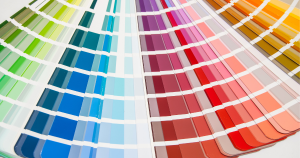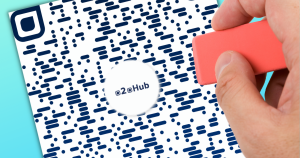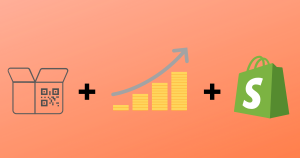QR Codes vs. Barcodes
Unless you’ve never been to a store in the last forty years, you are probably familiar with barcodes. They are ubiquitous in product packaging, checking-out in stores and in many warehouses around the world.
So, are QR codes the new bar code? Are QR codes going to replace bar codes? And what’s the difference?
The answer to these questions is both “yes” and “no”. To understand why, we’ve first got to do a bit of very simple math.
It’s All About Information Density
Let’s say we have a strip of wood that is 10 inches long by 1 inch wide. We draw squares for each inch then decide whether to paint each square either black or white. How many different squares did we paint? Well, that’s simple – our strip of wood was 10 inches long by 1 inch wide and each square was 1 inch - so we had 10 squares.
Now, let’s say we have a board of wood that is 10 inches by 10 inches square. Again, we draw 1 inch squares and decide to paint them either black or white. How many square do we need to paint time? If you remember back to middle-school math, the area of a square is calculated by multiplying the length of the two sides. 10 multiplied by 10 equals 100. So, we now have 100 squares to color.
2 dimensional objects can hold many more squares - or "information" - then one dimensional objects.
10 squares vs. 100 squares. That’s what makes QR codes work: A barcode is “1 dimensional”, like our strip of wood. A QR code is “2 dimensional” like our square of wood. 2 dimensional objects can hold many more squares - or “information” - then one dimensional objects.
The Limits of 1 Dimensional Barcodes
Because barcodes are only 1-dimensional, they can only hold a very limited amount of information. Thus, barcodes are only designed to hold numbers. This is why you often see a number printed under a barcode (which shows, in human readable form, the number the barcode encodes).
The number encoded in the barcode is usually something called a “UPC”, or a universal product code. This is a universal number that the manufacturer of a product gets for their product that uniquely identifies their product compared to every other product in the world.
When a retailer adds a product to their store, they usually enter into their database system the UPC of the product, the amount they are selling that product for and how many items they have in stock. Then, at checkout, when you scan that UPC their database looks up the price for that UPC and deducts that item from their inventory.
This all works great in a supermarket. But there is a problem for broader applications: for the barcode to be useful, it needs an accompanying database. While the supermarket has that database on their internal network, your cellphone does not. And thus, the usefulness of barcodes are really limited to “controlled” environments where the scanner is already loaded with information on what the barcode means.
QR Codes Take Over Where Barcodes Leave Off
Because QR codes are 2-dimensional they can hold a lot more information than a barcode. They don’t just hold a few numbers, but rather they can hold thousands of characters of text. Thus, a QR code can hold a web address (a URL) or other human and machine understandable identifiers. This leads to all the different uses of QR codes (many of which we discuss elsewhere in the QR Code Generator Hub Academy).
But the big idea is this: QR codes can stand-by themselves whereas barcodes require an accompanying database to be useful.
When to use Barcodes Over QR codes
The reality is QR codes can do everything a barcode can do, and a lot more. And it’s our belief that QR codes will, eventually, entirely replace barcodes.
QR codes will, eventually, entirely replace barcodes
The only place barcodes are still useful is if you need to use existing scanning infrustructure. For example, if you need to be scanned in an existing supermarket, you probably need to use a barcode. Or, if you need to use an already deployed handheld scanner.
But for new applications you really should use a QR code – EVEN if you are just using it to encode a UPC or nubmers. By building new infrustructre on QR codes instead of barcodes you are enabling a much more flexible and powerful future with no added cost.
If you’d like to discuss how to do specialized QR code deployments, don’t hesitate to reach out to us. We are here to help.


